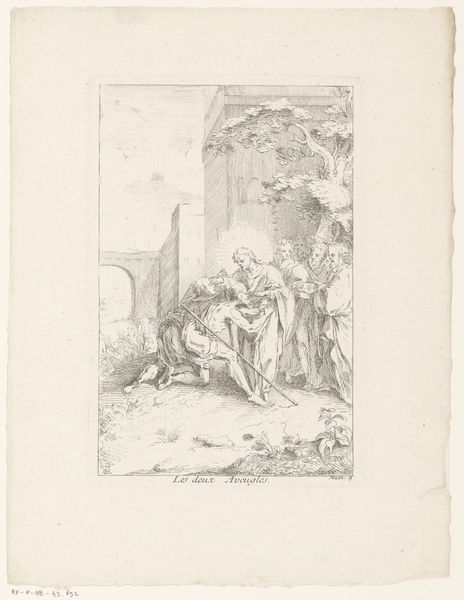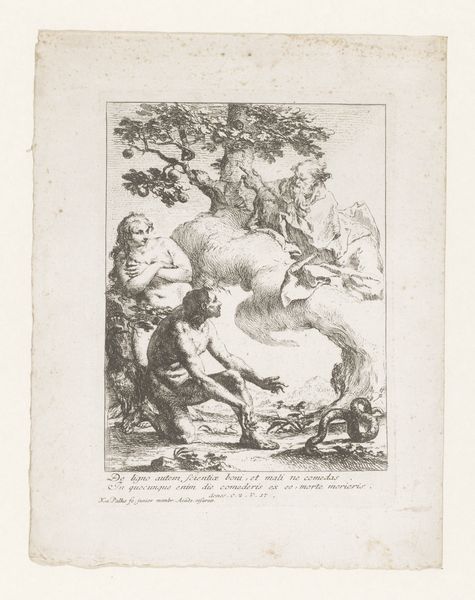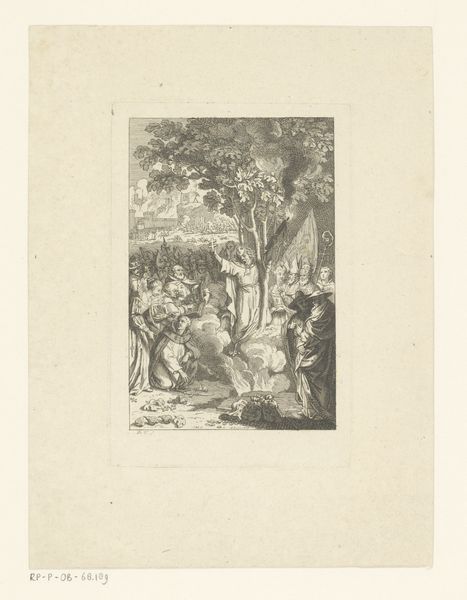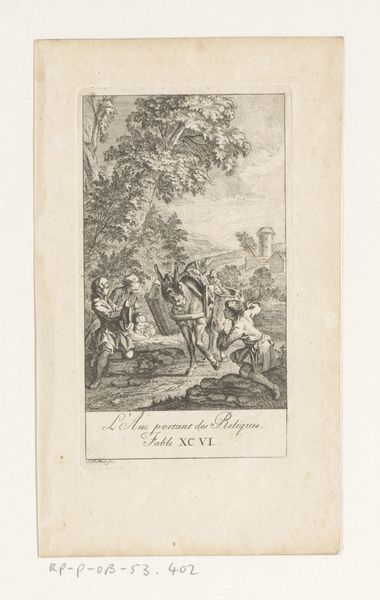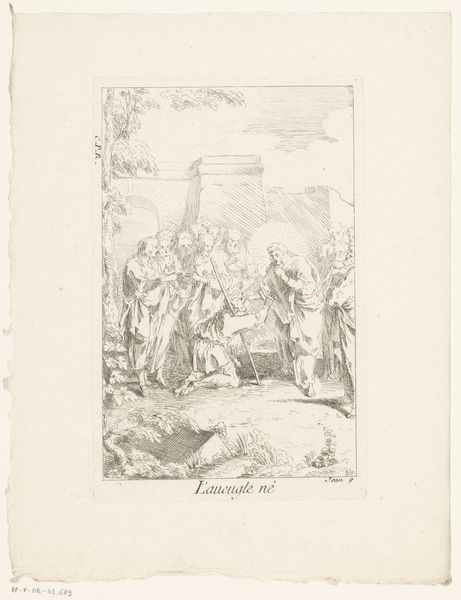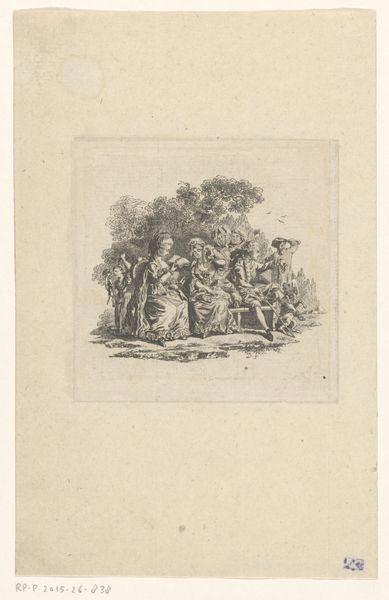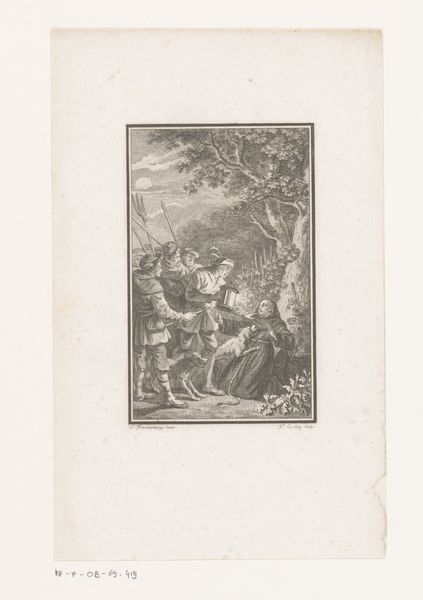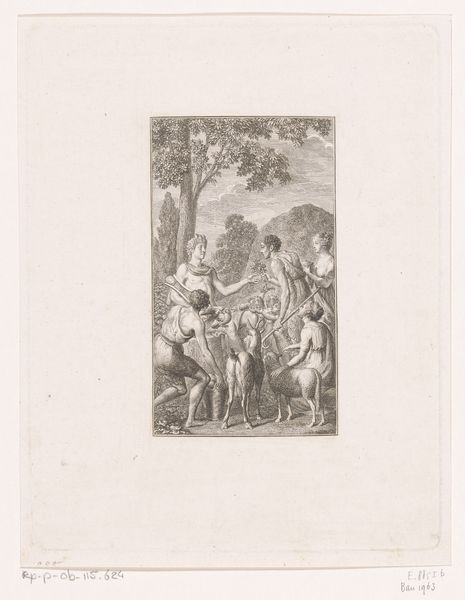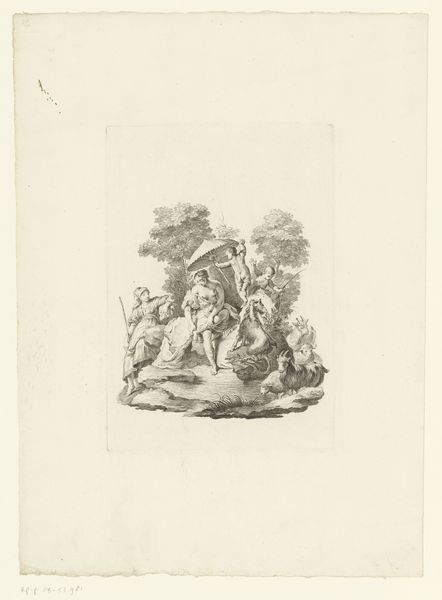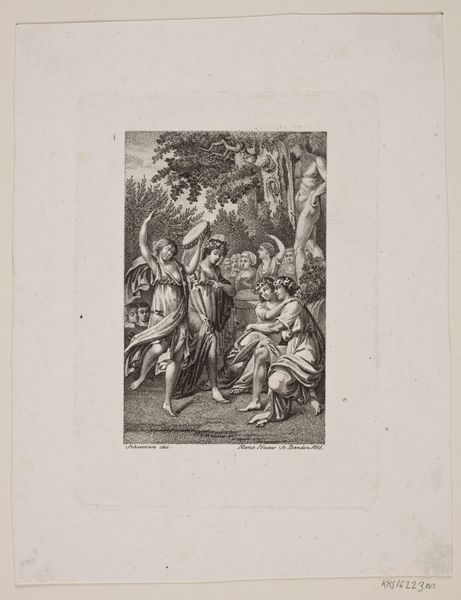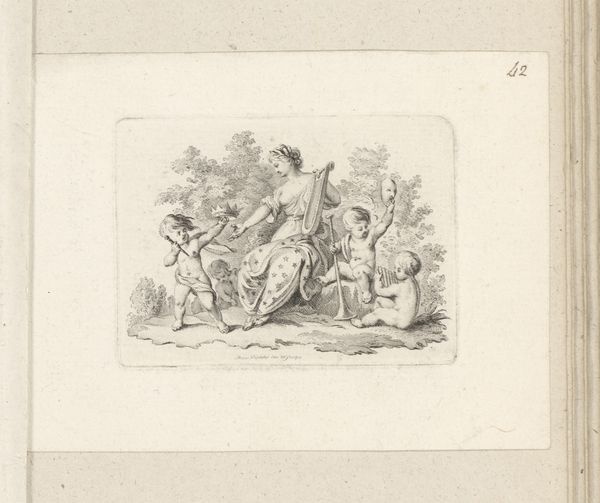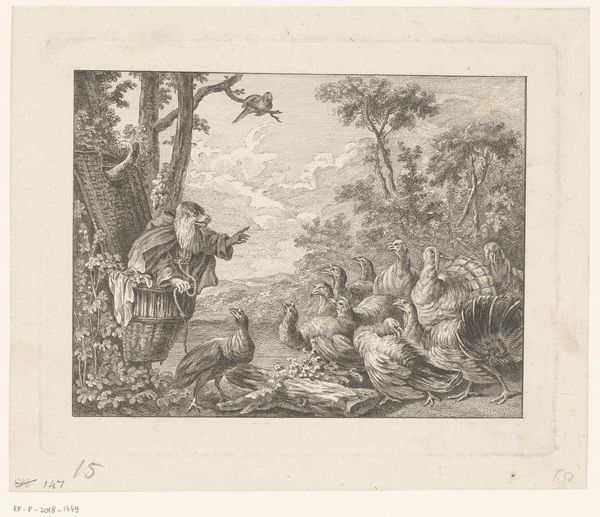
print, engraving
#
baroque
# print
#
figuration
#
line
#
history-painting
#
engraving
#
christ
Dimensions: height 198 mm, width 128 mm
Copyright: Rijks Museum: Open Domain
Gabriel Huquier made this print of the Feeding of the 5000 in the 18th century using etching, a process that democratized image-making. The artist would have coated a metal plate with wax, then scratched through it to expose the metal. Immersing the plate in acid then bit away the lines, allowing for multiple impressions to be printed. Look closely and you can see how Huquier used the etching needle to create a delicate and intricate image. The density of the lines determines the tonal range of the print, giving a sense of depth and light to the scene. The availability of prints like these allowed for wider dissemination of religious imagery. Compared to unique paintings or sculptures, prints made art accessible, creating a new class of consumer and collector. It represents a shift in the art world, with production more closely aligned to early capitalist modes of consumption. It challenges our understanding of craft, class, and labor.
Comments
No comments
Be the first to comment and join the conversation on the ultimate creative platform.

